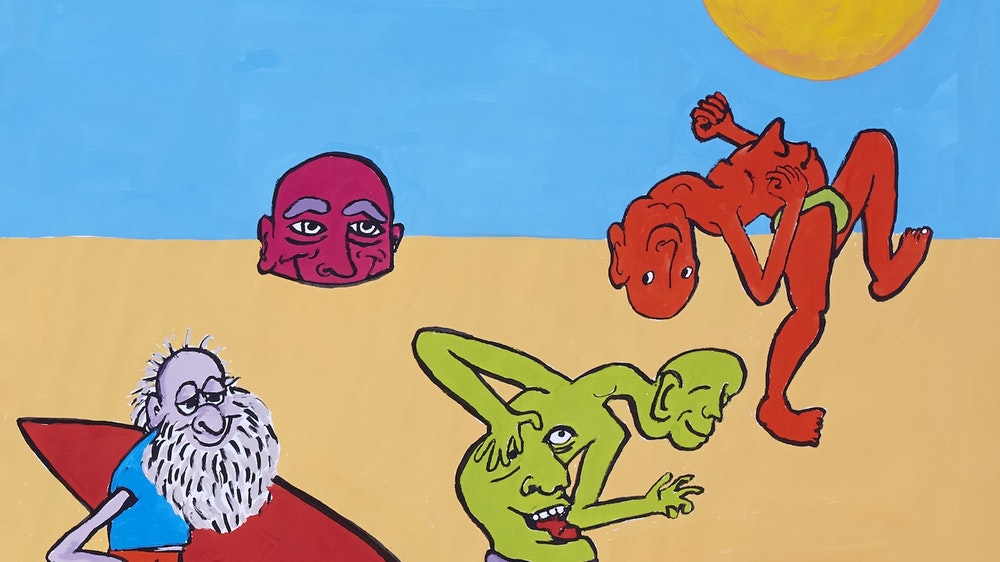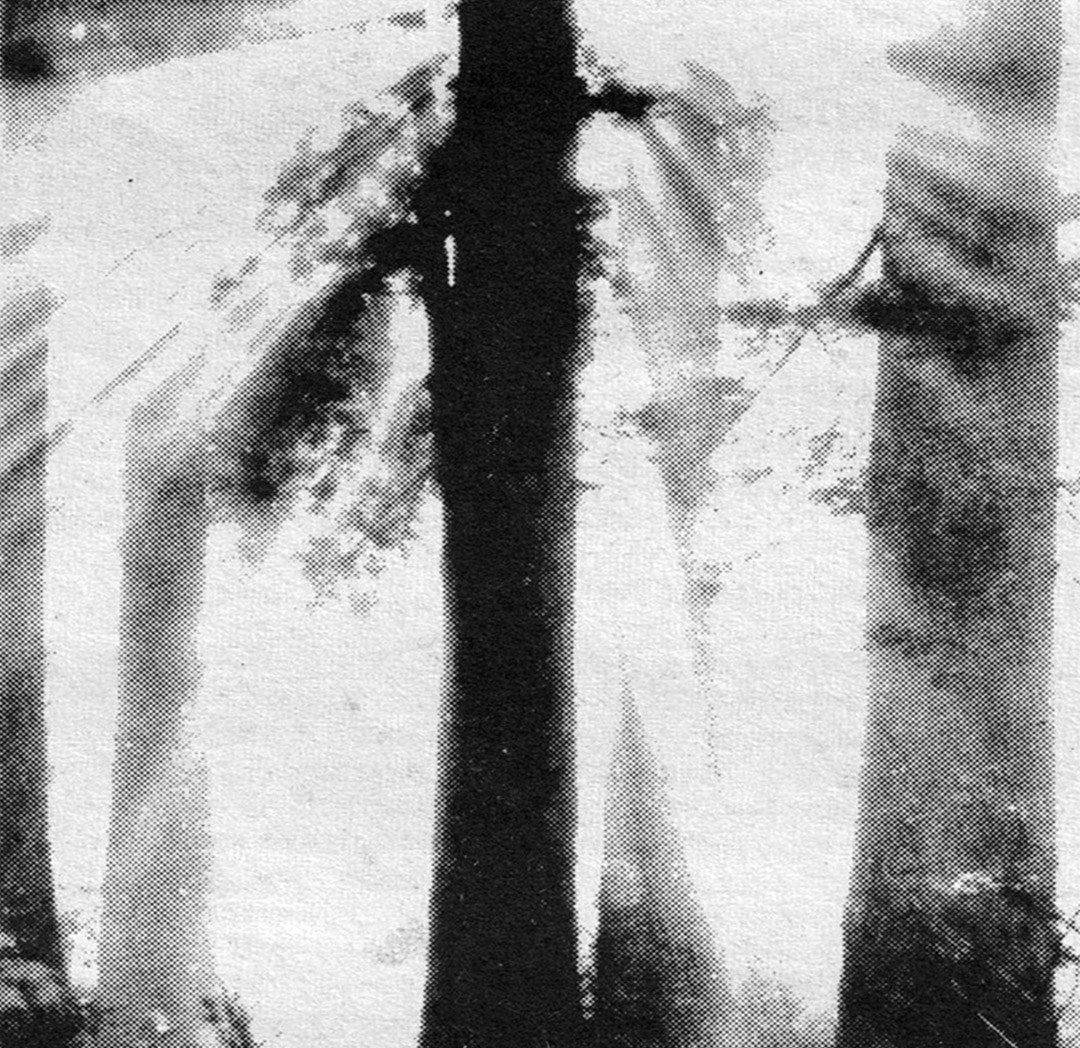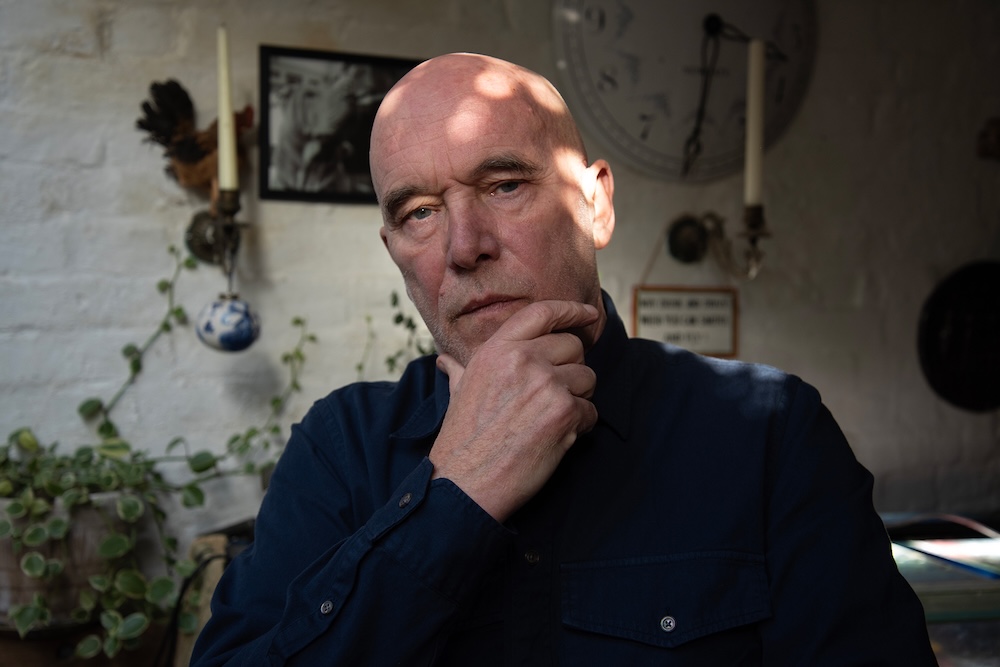Sutja’s Metaphysical Circus: Follow The Sun

Well, maybe I should start from the very beggining…
Summer is coming and some of us are already in the search of sunny spots, wonderful beaches, fresh cocktails, etc. but very few of us think (or even know) about the fact that the sun is a big star and like every shiny star in this universe it will collapse at some point in life. I'm sorry to remind you this now, but yes, the sun will end someday and life in earth will be no longer possible. Maybe in Mars? Who knows, anyway… we'll need a good amount of money – as usual.
“Maybe I inject some vision of a simpler more self-contained, innocent Australia in the way I hear this music. A ‘pre-Crocodile Dundee, Koala Blue, Ken Done’- Mikey Young (Total Control, Eddy Current Suppression Ring)
I adored the sun since I was a little child and that's why the name of this beautiful compilation caught my attention and then the music… just blew my mind. I recognized some of the names on it and I felt curious about the fact that all of them were somehow related to Australia. I started to investigate and asked to the guys from Anthology Records to give me some more information. I really wanted to make this article (in my own non- journalist style of course).
They answered very quickly and inmediately sent me a copy of this wonderful thing (God you don't know how much I appreciate these kind of things…)
Put on your flip flops, take some cream, leave your troubles behind and follow the sun!
“There was a con fidence that you could just hop in your Kombi and go 'follow the sun' and life would be OK.” – Greg Callan (Mata Hari)
I've never been in Australia before (if you're reading this and wanna invite me…), but I can imagine how beautiful is – in my mind.
From the late sixties and till the end of the seventies, Trevor, Cathie, Doug, Megan, Andy and Dave among others, were part of a beautiful and interesting scene that changed the history of australian music forever.
It was the post-hippie era and things were kind confusing, but some people still had the freedom, loneliness, love, experience, hope and desillusion from the wild sixties and some other people were looking into the future and evolving into a new kind of “freeform” spirit, kinda more intellectual and profound. The musicians at that time started to create a bit more complex music, but they still had the essence and the vibe of the past era even though they were still living tough times and were already looking for a better future. It was such an interesting time for culture and art.
Everyone had the feeling that better times were coming for Australia, government was changing slowly, conscription laws ended, troops were coming back from Vietnam, they put an end to tertiary school fees, woman and indigenous started to have more freedom and possibilites, gay pride began to germinate…
“Sun, giver of life and protector…”
Facts…
• Dave Douglas was deeply inmersed into spiritualism and religion, he released his “Fragrant Breeze” back in 1978.
• Our beloved captain, mister Trevor McNamara, with only 19 years, recorded and finished his first album “Hey Captain”, it was the year 1969, but it wasn't until 1971 that the album saw the light.
• In 1969, Andy Amstrong recorded his first solo album “At Last”, a beautiful folk journey that completely changed in 1972 when he recorded his second album “Perspective Works” were he joined forces with Gary and Daryl from the band Loveday Carter.
• The band Tidewater was formed by Brooke Mostyn and Greg Champion – it all started as a folk duo which later transformed into a full country-rock band with the help of Paul Liesing, Dean Neilsen and Graham Davidge (Graham was also the original guitarrist of the band Little River).
• In the 50's Marian Henderson started as a pianist for the well-known rock band Thunderbirds. Her only album “Cameo” was recorded in one afternoon with a group of musicians that included Doug Ashdown and Ed Gaston. She never felt happy with the result.
• In the 70's there was a christian movement called The Truth and Liberation Concern, they organized events and concerts and the band Flock played there regularly.
• In 73', Paul Adolphus was living in Japan and decided to come back to see with his own eyes how the Australian scene was changing. He planned a recording studio session alongside the musician Mitsu Harada and recorded the album “Dawn Wind” – only 200 copies with beautiful handmade art sleeves made by the art communities from Tokyo and Kyoto.
• Doug Ashdown started playing in Adelaide's music scene right before the boom of his well-known single “Winter In America”. Something Strange is taken from one of his early works “Source” that came out in 1968.
• During the radio ban days the band Autumn hit the charts with their single Yellow River. In 1971 they signed with Warner Bros and recorded “Comes Autumn”, an authentic masterpiece that sadly became their latest one.
• In 1976, Ross McInnes, Emile T'Boom and Rick Dakin recorded “Knowing That You're There”. Maiden Australia was recorded at Trafalgar Studios using the APHEX Aural Exciter, which was kinda hard to find and/or expensive (as hell) to use.
• Back in the early sixties, Gary Shearston was a professional performer who sang alonside John Sellers and recorded quite some material during that decade. When Peter Paul and Mary recorded their single “Sometime Lovin'” (which was originally written by Gary) invited Shearston to America and spent several years in there. The album “Dingo” was recorded in London in 1972.
• There's two different versions of Cathie O'Sullivan's – “The Orange Tree”, the first one appeared on her first album “Artesian Waters” – accompained with her arp and the second one appeared on his album “High Places” (Cleis Pearce from Mackenzie Theory also collaborated in this album).The Orange Tree is also a poem by John Shaw Neilson.
• Shepherd was originally formed in 1971 by Noel Geoghegan (who later left the band and formed Moonlight), Barry O'Brian and Chris Anderson. “Whispering Pines” was originally written by The Band.
• The band Moonlight supported Deep Purple, Bo Diddley, Little Feet, Freddie King and Tangerine Dream among others. They won a contest in which the prize was signing a record deal with Polygram, but one of the members of the band (Doug) worked for the rival company Warner , so they decided to sign Warner instead of Polygram. Oh, la la.
• The album “Marantha” by Megan Sue Hicks was released in 1972 and it was backed by the well-known band Flying Circus.
• In 1976, Steve Warner decided to demand a bank loan for the costs of the recording of his album “Steve Warner” and the Australian Council also gave him a donation for producing and manufacturing it. Only 500 copies were made.
• “Today's The First Day Of Your Life” was released by Warner Brothers in 1972 and it's the only release by Catmando.
• Billy Green's real name is Wil Greenstreet. He's also known for scoring the Australian biker film “Stone” (1974).
• In 1975, Simon Jones was asked to provide the soundtrack to the film Melanie and Me. Only 100 copies were pressed and offered at the premiere of the film.
• In 1972, Mata Hari went to play the finals of the Northern New South Wales regional contest, but when the judge announced that the winer was the band Bogislav the judge also decided to offer them a record deal with Polydor Records. Their only single “Easy/Gypsy” was produced by Peter Martin.

Interview
Hello Megan. I've been such a big fan of yours since the very first moment, the first time i've listened to your song Hey, Can You Come Out and Play many dark and melancholic feelings came to my mind (which is such a wonderful thing) and it became the perfect soundtrack for the tough times. What exactly happened to you in the moment you wrote the lyrics? and how was the recording of Maranatha?
"Hey, Can You Come Out and Play" was one of the first songs I wrote. 1969. I was not quite 20 years old, living on my own for the first time. My parents had recently moved to Sydney; I would follow in a few months, but before heading out across the ocean, I wanted to spend time in Texas, where I had made friends during my freshman year of college. I was at that transition where I wanted to be an independent adult, but my emotions were still solidly adolescent. I started dating a boy who liked me more than I liked him, and after a few weeks I dumped him. He didn't waste any time at all getting together with another girl, who, in my opinion, was way cuter / smarter / more stylish / totally cooler than I was, which made me see the young man, suddenly, with new eyes. I wanted him back. ("Hey, now that you've gone away/You can't hear me, so I'll say/Burn this infernal carousel./Please tame me.") That "please tame me" line is a direct shout out to The Little Prince by Antoine St. Exupery, which made a deep impression on me when I encountered it in high school. So…I'm sorry if you're disappointed to find out that it was fueled by teenage jealousy and not some serious metaphysical disillusionment.

The LP was recorded after hours at the EMI studios in Sydney. My flatmate, who was also my supervisor at the Sydney of fice of Go-Set Publications (Cleo Calvo…Who is known as Clelia Adams and who is to this day a C&W singer / songwriter was dating Doug Rowe (d. 2015), lead guitar, singer, and song writer for The Flying Circus, which was one of Australia's most popular bands in the late 60's and early 70's. Doug heard me sing Come Out and Play and told me if I could come up with 10 original songs, he'd like to produce an album. Within 6 weeks, I had the songs, and we were in the studio. He did the arrangements and production; his band played backup on the cuts with drum, bass, and electric guitar; and he and Orlando Agostino (who lives in Calgary and plays music there) did the lead guitar work. I did a little Travis picking and rhythm guitar…very rudimentary. We must have had — I don't know — no more than 10 evenings in the studio. Finished recording and a quick mix shortly before Doug and his band left Australia for two-years in Canada. A few months after the recording was done, EMI, with its catalog, was bought by Warner Brothers. Warner Brothers pressed about 200 copies of Maranatha. But before they did, my visitors' visa expired, and I had to scoot back home to the U.S. It astounds and delights me that the Anthology people have unearthed this little project. It delights me further that a little song I wrote almost 50 years ago speaks to your heart.
– Megan Sue Hicks
Margaretha Geertruida Zelle aka Mata Hari was executed in 1917, his artistic name (which means Sun or Eye of the day in Malay) appeared for the first time in 1897. Why did you guys decided to name the band Mata Hari? Your song Easy has such a positive-love vibes, who's the lucky girl/or boy behind the message / lyrics?
The band was named after Margaret MacLeod the Dutch Spy It was one of a bunch of names that were being looked at for the bands name. As to who is the lucky girl in the song ill leave that to the imagination.
– Mata Hari
Where did the idea of this compilation come from?
Keith: I don't think I would have ever entertained the idea if not asked. Compilations were a really important thing for me as a teen, finding that artist and one song that blows your mind and following that path that leads to other paths and so on. Searching for songs that hit me hard has always been my main motivation when buying records or scouring the internet. I've never really been motivated by finding the rarest records out there,more the addiction of that feeling that comes when finding a song that seems to perfectly fill a hole that needs filling. Hopefully doing this comp does the same for others.
How was the process of selection? Was it a challenging task to reunite all the songs from all these great artists?
The selection was kind of easy and fell into place without much hassle. The obtaining of permission for some of it, major label stuff and missing persons was the hard part. Musically, even though it's quite varied, I don't really remember us having much difference of opinion on what should make it and what shouldn't.
Do you guys know about the compilation made by the two great selectors DJ Sundae & Julien Dechery called Sky Girl?
Yeah, my good buddy Michael Kucyk put it out. Some fine jams on there.
You can buy Follow the Sun HERE (digital) and HERE (12” vinyl edition). Many thanks to Anthology Records & Will from In House Press.






















